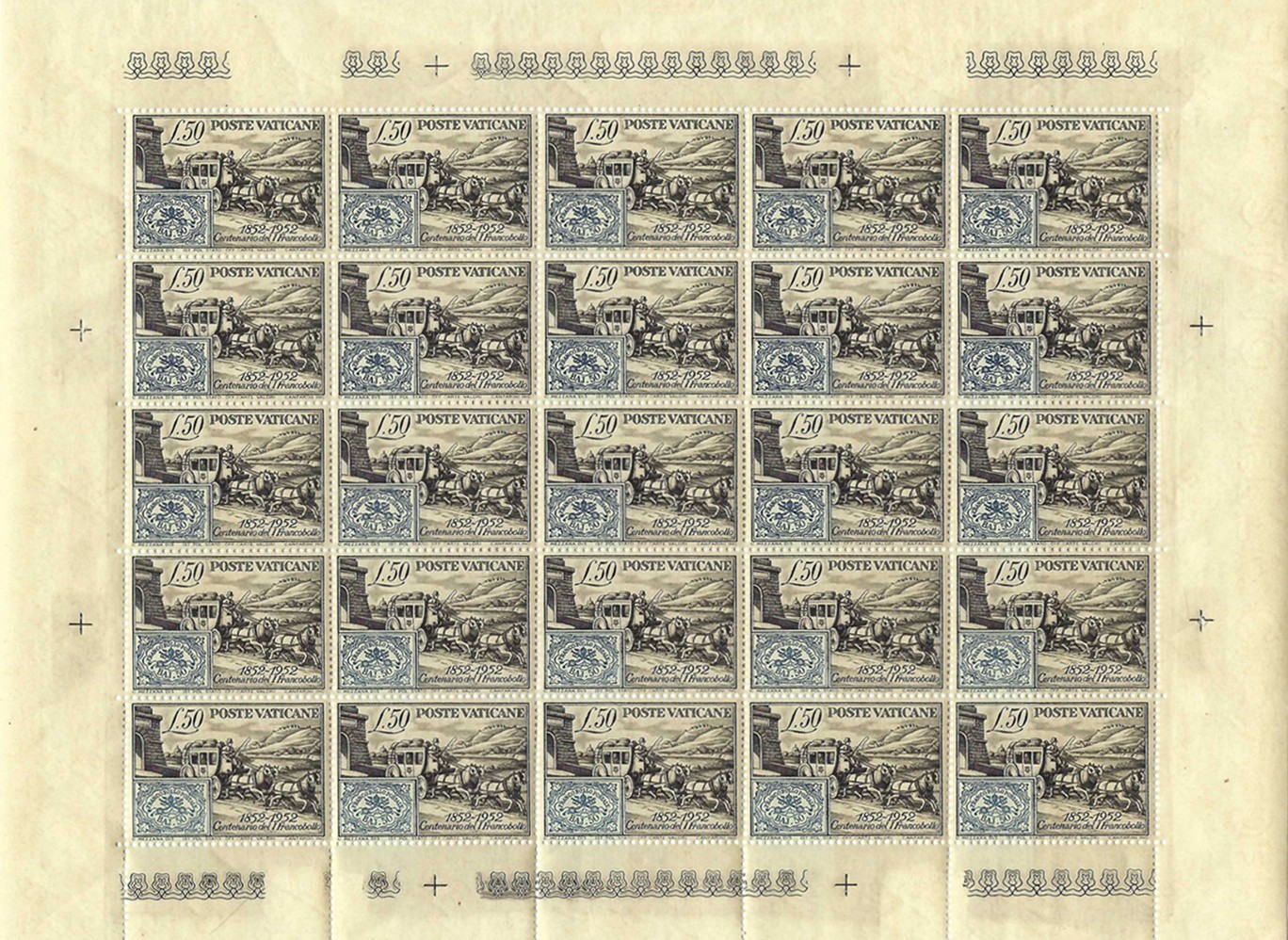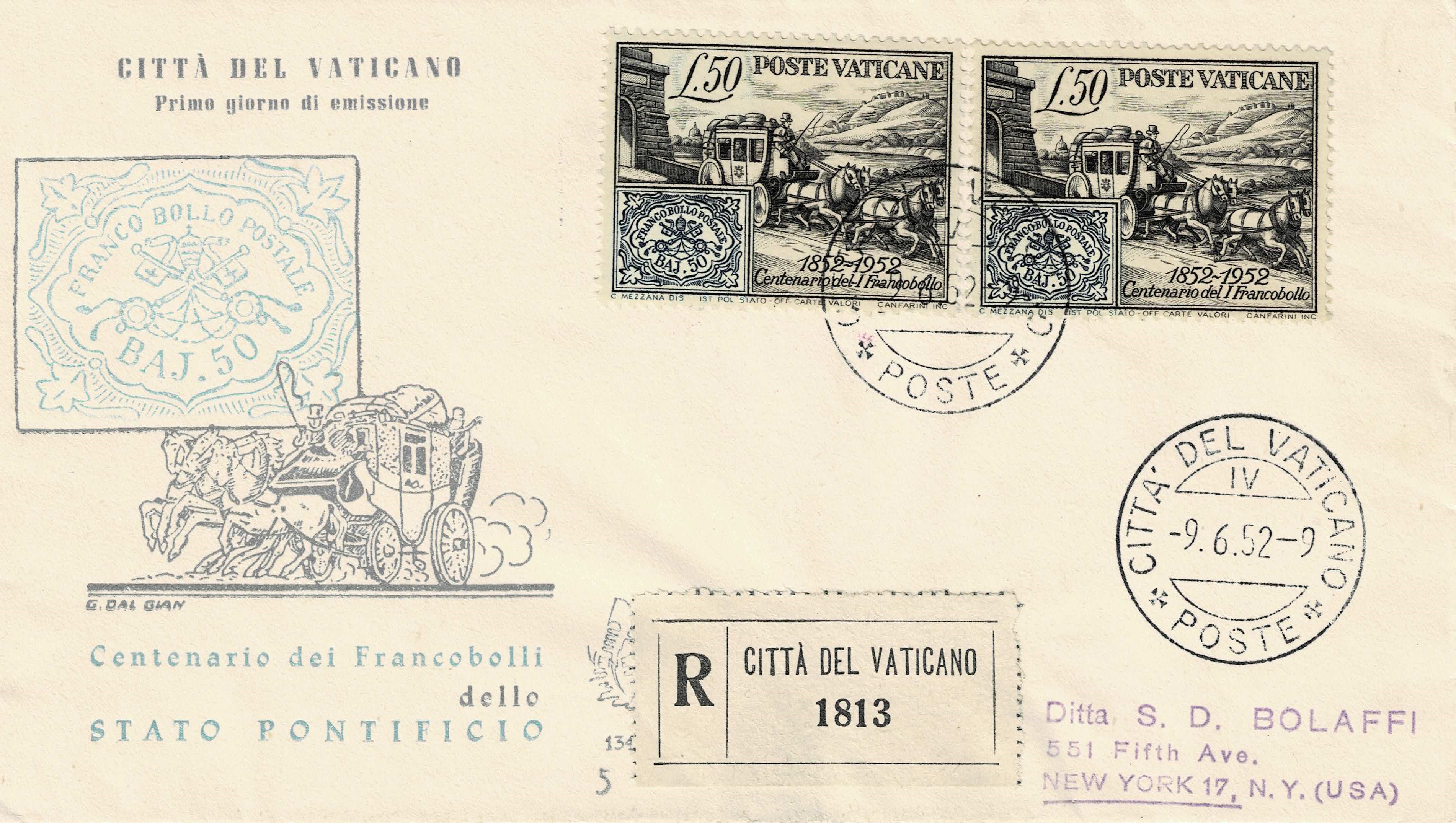
Home

To mark the hundredth anniversary of the first adhesive postage stamp of the Roman States, the Vatican released a stamp and souvenir sheet depicting a Papal mail coach of the era. In the lower left corner a reproduction of the first Papal stamp of 1852 is shown. The Roman States (also known as the Papal States, the Pontifical States, and the States of the Church) had their beginning in the year 754, when the Frankish King, Pepin the Short, saved Italy from the clutches of the Lombards. After the defeat, Pepin gave the conquered provinces to Pope Stephen II as the emperor proved he was unable to defend them. This granting of territory was known as the Donation of Pepin and they begin the role of the Pope as a temporal ruler. 
Upon the death of Pepin, his son Charlemagne succeeded to the throne. During his reign the Lombards again invaded Italy, and the Pope appealed to Charlemagne for help. He entered Italy with a large army and drove out the Lombards. Upon the successful conclusion of the defeat of the Lombards, Charlemagne went to Rome for the Holy Week services. While there he renewed the Donation of Pepin and added the island of Corsica and several cities to the Pope's domain. This was the beginning of the Roman States that was to embrace all of Central Italy and a number of islands for a stormy history of more than a thousand years. The year 1860 saw the beginning of the end for the territory of the Popes. At that time, King Victor Emmanuel II and his troops overran the Roman States and by 1861 had occupied eighty percent of the territory. The Pope had little more than the City of Rome left. On September 20, 1870, the King's troops attacked Rome at five o'clock in the morning. Five and one-half hours later the Italian flag flew over Rome, the Roman States had come to an end. Pope Pius IX locked himself in the Vatican in protest as a voluntary "Prisoner of the Vatican." Five subsequent Popes reigned during the fifty-nine-year period from the fall of Rome to the signing of the Lateran Pact. Each of them refused to set foot outside of the Vatican. Finally an arrangement was reached in 1929, and the temporal power of the Pope was restored. He was a prisoner no longer.  Intact Sheet of 25 of the Roman States Centenary Stamp From the collection of Dennis S Oniszczak |
| (National Philatelic Museum, Volume VII, Number 1, 1954, pages 61-107) We are greatful to the Cardinal Spellman Philatelic Museum for allowing the Vatican Philatelic Society to use the copyrighted text on our website. |

